Asian security environment is in a state of deep turmoil. The single event which has occasioned it is the giant rise of China during the past couple of decades, reaching higher and higher levels of economic and military strength. All neighbors of China including those further afield, are engaged in working out strategies to cope with China should it turn into a rogue state sometime in future.
Even the US is looking for new equations of power as the centre of political and economic balance shifts towards Asia, led by China whose long-term vision of itself remains unfathomable. Setting aside its suspicions of many decades and making an exception to its consistently held non-proliferation policies, the US offered to India a civilian nuclear agreement which will boost its economic and military strength. The rapprochement has been followed by another agreement for joint defense framework that will be in place for ten years envisaging a closer military relationship and arms sale to India. China has not been very happy over these developments as it already sees itself as being the reason for them.
China has been singled out by US as its most likely bete noir of the future because of its galloping economic growth. Economists assess that the Chinese economy will outgrow US economy by the third decade of this century, giving it almost an equal status. But the Indian economy is also expected to grow almost uniformly during the same period, equaling the size of US economy and growing beyond by 2050s. Thus, while China becomes the largest economy in the world in the next 20 years and the most powerful nation in Asia, it will also have to share the high table with India, and Japan which before the spurt in Chinese growth, was the biggest economy in Asia. These three powers Japan, India and China, will have jointly or singly the greatest sway over Asian security in the coming years. History has already decided that they cannot love each other. And since rising to such eminence requires assurances of availability of markets and resources, the relationship among the three is likely to be marked by mutual rivalry, jealousies and recriminations. This accounts for the turmoil which is already visible in Asian security. If careful and visionary steps on future strategy are not taken now by all the nations of Asia, dark times will lie ahead. By opting for India, also a fellow democracy and hence sharing common values, the US wants to preempt those dark times.
US have thus become an active participator in the power play in Asia with a new vantage hold on Asian security. With its new alignments with India, it will try to balance off any attempt by China to dominate over Asia. Furthermore, its own impact on Asia and its security will stay unabated as it plays the role of mentor in the region.
The Japanese have also lately, been displaying a special interest in India, compelled by similar reservations on China. Since 2004, India has become the largest recipient of its overseas aid. In addition they are also mulling over how the constitutional embargoes, placed by the victorious US on a defeated Japan at the end of World War II, restricting their defense forces by size and role, can be amended. Japan is spending not more than 1% of its GDP on its defense whereas the figure for US is 4%. Some clever maneuvering is taking place in this respect and the size and lethality of the Japanese Coast Guard, not identified as a self-defense force, is being furiously expanded. The Japanese, like China and India, is also entering space in a big way. All the three countries have set somewhat identical targets for space and research programs for lunar orbit and manned flights to moon, because the common belief is that space can become the platform for future wars if they cannot be avoided.
Another source of future aggression can be the economic tool of currency reserves. China is no longer a Marxist country even though it is a one party ruled authoritarian communist state. It turned capitalist a long while ago, of course with Chinese characteristics and opened itself to foreign investments, trade and globalization with its instant connectivity. The boom in economy which came in their wake has enabled it to accumulate reserves of which nearly $ 1.4 trillion is invested in US treasury bonds. Japan, the number one economy in Asia until overtaken by China, holds reserves of just less than $ 1 trillion. Such enormous wealth, in the context of cash imbalances in other Asian countries, gives them opportunities for purchasing or heavily investing in state assets of the weaker Asian nations and thereby acquiring undue hold over such countries. It can effectively turn out to be a new form of colonialism. This calls for the establishment of appropriate review committees in such countries to exclude what can prove to be politically mandated sinister investments. Lesser nations have, thus, to remain on guard to preserve their economic integrity and safety.
Infact the nations of South East Asia, neighbours of China and Japan, have already been vigilant for quite sometime. Five of these, Indonesia, Malaysia, Thailand, Philippines and Singapore in 1967 created ASEAN, Association of South East Asian Nations, gradually enlarging it between 1984 and 1995 to include Brunei, Vietnam, Laos, Myanmar and Cambodia. These nations primarily got together to expand intra regional trade and to move towards a single market and customs union. The secondary objective was to create a forum for joint assessments for any predatory assault from more powerful nations of the North and across the Pacific. While the ASEAN has not been able to accomplish much so far by way of integration and common policies, it has given its members a sense of being a close knit group with some common concerns the most important of which remains not getting over shadowed by more powerful and not necessarily benign neighbours like China, Japan and the US.
In 1993 these nations took another step with national security as a special focus to set ARF, Asean Regional Forum, with a considerably expanded membership. ARF includes several distant countries like US, Canada, Australia, Russia and European Union, besides all major Asian countries like India, China, Japan and North Korea. The logic for creating such an omnibus forum was to have all likely adversaries on one platform so that all aggressive design towards the region could be controlled and stalled. ARF has not so far deliberated upon any major security issue but the hope is that in time to come, when regional rivalries are likely to be exacerbated,. ARF could play the role of a mini General Assembly of the UN, India, by being a member of ARF, is now enabled to have its say on any troubling issue, arising in South East Asia.
Their rivalries were again on display when another forum called East Asia Summit was being set up. To the chagrin of China, India was invited to participate in it by Japan, Indonesia and Singapore, with tacit support from the US. By the time the East Asia Summit was inaugurated in 2005, Australia and New Zealand had also become its members. The Chinese ability to dominate over the institution was thus greatly diminished. The EAS is a futuristic organization, to play a role when in future security related issues in the region would become highly complex. Again, through its membership, India will be enabled to present its view forcefully on any or all issues including security.
The region’s cautious attitude towards China flows from the historical legacy when the Chinese communist party was blatantly supporting insurgencies and smaller communist parties in the neighbourhood. Chinese war with Vietnam in 1979 and propping up of the murderous government of Pol Pot in Cambodia had added to their misgivings. The Chinese attack on India in 1962 and subsequent withdrawal had already added another dimension to the mystery of Chinese decision-making process. Since then and particularly after the Tiananmen Square uprising of 1989, China adopted a low profile and has been focused on economic development, avoiding distractions which could spoil its concentration. Chinese rapid economic development from the 1990s has revived those anxieties again since China has a number of territorial disputes with its neighbours which have remained unresolved.
China is squatting over 18,000 sq km of Indian land in Aksai Cheen in Ladakh and claims ownership of the entire state of Arunachal Pradesh, an area of 84,000 sq kms. It is showing no signs of resolving these land disputes, leaving one wondering whether it wants the disputed status quo to remain just that way. The aim seems to be keeping India destabilized in these regions. The Arunachal Pradesh issue was recently raked up by China with many shrill and hostile comments emanating from state controlled media in China. China’s long and consistent support to Pakistan, including aiding of the latter’s nuclear weapon development against India, violating all norms of non-proliferation, is an abiding indicator that China does not wish India well at all.
Certain projects undertaken by China in the neighbourhood strengthens the suspicion that it wants India hemmed in from all sides, so that it remains a regional power only in South Asia and does not reach the status of an Asian or global power.
Among these projects are port development at Gwadar in Pakistan which could also be a resting place for ships of Chinese Blue Water Navy, Karakoram highway connecting Pakistan with Western China, surveillance outposts on Myanmar Islands, a road from Yunan to Bay of Bengal through Myanmar, beefing up of ports of Myanmar and Srilanka etc. The emphasis on port development suggests an intention to use them during forays of Chinese navy into the Indian Ocean. These projects when ready will also help China to expand its trade and investments further to the West. They are, thus a double purpose activity, which should alert India and require it to go by a worst-case scenario for its security and prepare accordingly for the challenges they represent.
At this point it must be stated, the sense of threat is not unidirectional: as their economy strengthens China also is becoming conscious that India can prove to be a menace. Their biggest worry arises from the presence of Dalai Lama and over 100,000 Tibetans in India. Although India has long ago accepted Tibet to be an autonomous region of China, the undiminishing strength of Tibetan nationalism and the magnetism of Buddhist monasteries in Tibet for mobilization of Tibetan sentiments against Han settlers and authorities there, create a deep suspicion in the Chinese mind that India will not hesitate to exploit any worsening of Chinese situation in Tibet. Selection of a new Dalai Lama when the present one dies could create such a scenario if the Chinese seek to enforce their choice on the Tibetan people. The entire Tibetan diaspora including those in India could be expected to explode against the Chinese with repercussions inside Tibet. In such an event China’s relationship with India will plummet and the borders would become active. It is probably because of such anticipation that the Chinese are delaying settlement of the border disputes with India.
The security scenario in East Asia remains troubled over the territorial disputes of China with its other neighbours. In East China Sea, China and Japan have laid rival claims over some islands and rights to explore gas and oil in the region. Neither side is giving in lest it is interpreted as weakness. The disputed Senkakus islands, presently in Japanese hands, lie in this patch of waters. Taiwan also claims Senkakus. In South China Sea, five countries, China, Vietnam, Malaysia, Indonesia and Philippines dispute ownership over Spratly and Paracel islands. A code of conduct signed by the five has taken away the sting but resolution of the problem of conflicting claims remains a distant dream. While India has no direct concerns over these disputes, deterioration in the situation could result in the blocking of Malacco straits through which India’s bulk of trade with Eastern countries passes. Such disputes and the tension of catching up with the US have made China determined to upgrade its military capacity as fast as it can. The Chinese military budget hides much more than what it reveals and can be conservatively placed between dollar 50 billion to dollar 80 billion. Its military spending is rising in double digits every year. India’s military budget is less than half in comparison. Two consequences flow for India from this. One is that India stands out as a much weaker nation militarily before China. The other is that the People’s Liberation Army of China will always try to influence Chinese party leadership to remain jingoistic towards India. That is why Chinese official media often displays a tough and uncompromising attitude towards India.
While China thus remains a potent danger to India on its Eastern and northern flanks, many dangers abound in South Asia itself. In it an anarchic security environment prevails, driven by the flow of history and individual state systems which have developed. The nature of relationship among states of the region is influenced by internal ideologies and power equations. Foreign policy remains a hostage to internal environments and the urge for regional cooperation recedes to the background. Efforts at power balancing with India sends regional co-operation to the bottom of the list of priorities.
The South Asian Association for Regional Co-operation has not made any progress because states like Pakistan and Bangladesh have unwarranted fears arising out of asymmetry of power between them and India. Absence of common democratic norms and desire for collective security also creates hurdles. Many of the states in the region have so far failed to develop an orderly state of governance and enlightened polity. Until all states of the region adopt a minimum set of guidelines for governance such as democracy, secularism and welfare for the people, co-operation in the region will remain elusive and problems of security will keep on surfacing.
Since these states emerged as independent entities after the departure of the British colonial power, an environment of conflict, major or minor, prevails in the region. The most serious of this conflictual situation is between India and Pakistan, dating from partition itself. Militant ethnic identity and extremist religious ideology account for some others. Authoritarianism and misgovernance have also spawned a whole lot of them. These conflicts have led to security deficits and political disasters and most of the region has failed to grow to its potential unlike the nations of South East Asia and Far East. What is worse is that they harbour deep suspicions about India’s motivations. The security situation on the Indian borders, therefore, remains perpetually problematic. Except for Maldives and Bhutan that have no issues with India, the remaining four, Pakistan, Nepal, Bangladesh and Srilanka feel unease about India and are capable of taking steps, potentially harmful to the security of India.
Most of the states on India’s borders including Afghanistan can be designated failed or failing states. The most dangerous region in the area is Pak-Afghanistan, characterized as ground zero by leaders and security experts of the world. An insurgency, powered by confusing strands of nationalism, misguided religious fanaticism, abiding hatred for the West in general and US in particular, historical misgovernance and repression and absence of credible civil society institutions, rages there. Pakistan was the prime mover of this phenomenon and now is turning out to be its prime victim. Its duplicitous policy of clandestinely supporting Taliban in Afghanistan and battling Pakistan Taliban in its North West is splitting its polity and armed forces and causing militant religious extremism, to spread into its hinterland such as Southern Punjab. Pakistan is imbibing more and more of the virus from Al Qaida whose leaders are still holed in safe havens in Pakistan. As Pakistan totters on account of its internal contradictions it represents a flash point for India and truly speaking for the world itself. The irrational and unthinking leadership of Pakistan has often displayed keenness in the past to go nuclear against India. It is not beyond the realm of possibility that they could share their nuclear technology with Al Qaida and other extremist entities. Pakistan, in the past, has proved to be the worst proliferator of nuclear technology and material. Since leadership there does not bind itself to any ethical or moral code, history can repeat itself.
It is a moot question whether India knows how to deal with Pakistan. It has relied in the past on the dialogue process but though romanticized, it has always proved to be essentially substanceless. Experience of many years shows Pakistan is unable to deliver on Kashmir and terrorism. Kashmir is its objective and terror its tool. There is plenty of evidence now that Pakistan also seeks to subvert the Indian Muslims by appealing to their Islamic instincts. Such propaganda does work as several cells have been discovered in the US, Europe and elsewhere where young natural born Muslim citizens respond to their religiously activated instincts and turned disloyal to the countries of their birth and upbringing. The threat from Pakistan is not just a territorial threat: it is also an ideological threat and is, therefore, to be combated at that plane. It should also be noted that Islamization is growing in the North East region of India, thanks to the collaboration of the Pakistani and Bangladeshi intelligence services. This development offers an easy tool for exploitation by evil-minded powers in the region.
There are many scholars and security experts who think that Islamic religious extremism has now got converted into an ideological movement which cannot be controlled by military means. Even in moderate Muslim countries like Malaysia, Indonesia and Maldives, its onward march has become a cause for concern. If it is a valid and true assessment, the US and NATO efforts in the Pak Afghan region can be expected ultimately to end in fiasco. This should be a cause for anxiety to India as it is investing heavily in Afghanistan in the hope that a stable and democratic order will emerge there.
Islamic terrorism, it should be understood clearly, is a joint project of Pakistani establishment and extremist organizations in Pakistan like Lashkar-e-Taiba, Jaish-e-Mohd, Harkat-ul-Jehadi Islam etc. for training, financing and operating jihadis all across the world against US, Jews and India, wherever Muslim interests have come under pressure and to establish Muslim Caliphates worldwide. Lashkar trained Mujahids have fought in Tajikistan, Uzbekistan, Chechen, Dagestan, Bosnia, Afghanistan and Iraq. Only recently a rift has arisen between the Pakistani Establishments and Pakistan terrorist organisations over the former’s military actions against Taliban in the North West region due to US pressure. In the eyes of the leaders of the Lashkar, the current leaders of Pakistan have turned unislamic and need to be punished. The latter are, therefore, fearful and will not call off terrorist operations in Kashmir and other parts of India.
As for other troubled countries of South Asia, Nepal has not stabilized after the demolition of the monarchy and embourgeoising of its Maoists. The Maoists seem bent on seizing all controls in Nepal and are systematically moving towards this objective. SriLanka continues to grapple with ethnic and identity conflicts even after the defeat of Tamil Tigers and death of their supremo, Prabhakaran. The Sinhala leadership will have to demonstrate a great deal of pragmatism and statesmanship to find a new and acceptable equilibrium for all the communities living there. Bangladesh presents a pitiable case with a bursting population growth, abject poverty and growing extremism in its polity and is unable to trust India. It is evident that SAARC has failed and needs to be replaced by another body which will promote democratic values, interdependence and conflict resolution. India should take a lead in the matter and invite only such South Asian states to participate who will not let their political hang ups to come in the way of expansion of regional trade, investments, water management, intraregional connectivity and counter terrorism.
The need for counter terrorism has brought the four central Asian states of Kyrgyzstan, Uzbekistan, Tajikistan and Kazakhstan into a regional institution with China and Russia, called the Shanghai Cooperation Organisation, in 2001. Besides dealing with Islamic terrorism this forum can lead to useful arrangements for accessing gas and petroleum products in Caspian Sea area. Institutions like SCO, Asean, and SAARC etc are all created on the model of European Union which dilutes the sovereignty of its members over some major political and social areas and reduces drastically the sharpness of balance of power politics. However the Asian regional institutions are far from accomplishing such results because of their members own sense of insecurity and fears of loss of identity but there seems to be no better way of ensuring their security. India’s decision to be a part of such bodies is a visionary decision. India’s voice is valued by the smaller nations of the East and that will add leverage to its opinions in South Asia also.
Because Britannia ruled over the waves the British were able to create an empire over which the sun never set. In the near future a deep contestation is likely to arise over who rules over the Indian Ocean. The Chinese want to control the sealanes as more than four fifths of the crude oil requirements of China pass through the Ocean. Bulk of raw materials like iron ore, coal and bauxite, essential for Chinese growth, like wise pass through the same routes. In the next twenty years, Chinese needs for energy and other raw resources are expected to nearly double. China is therefore investing heavily for creating s blue water fleet, with aircraft carriers, nuclear submarines and paraphernalia capable of projecting force in the Indian Ocean apart from the Pacific. India senses a threat from such developments, since four fifths of its own energy requirements like oil from Persian Gulf, liquefied gas from Qatar and Indonesia, come over sea routes. The smaller nations in the region are alarmed by the growth of sea power of India and China and are beefing up their own navies. Hopefully, the rivalries in the Indian Ocean will be contained through prudent diplomacy and non-belligerent engagements.
Only three other trouble spots affecting Asian security, remain to be considered and they are Palestine, North Korea and Iran. No one can predict what shape a solution of the Palestinian question will take since each side remains adamant on its terms, the Palestinian Arabs on sharing of ownership of Jerusalem and vacation of some Jewish settlements from earlier Arab owned land and Israeli refusal to concede on the two points. India has to tread very carefully while dealing with them since it upholds the humanitarian and just demands of the Arabs and at the same time has a very close security relationship with the Israelis through which flows highly sophisticated equipment, essential for its safety and defence. No foreseeable change in this policy is likely to occur.
North Korea has hugely damaged Indian interests in the past by supplying long-range nuclear capable missiles and missile technology to Pakistan against receipt of nuclear weapon technology in return. But no new damage is expected. North Korea is an exceptionally frail economic entity and all its neighbours are worried over its ongoing nuclear weapon programme and its intentions. North Korea like Fidel Castro in Cuba is run only by one man Kim Jong-il, dictator of the country. He is believed to be not in good health. His sudden collapse can open up several possibilities; a civil war, a gradual unification process German style with South Korea, attempt at annexation by China or a proxy war involving US, India is just likely to remain a distant watcher, going along with solutions that UN may offer.
Iran’s is a perplexing case for India’s security and foreign policy. Although a signatory in 1985 of the Nonproliferation treaty, NPT, the world believes it has violated its commitments and is secretly engaged in a nuclear weapon development exercise. Essentially Iran is a fundamentalist Islamic country with links to Hezbollah in Lebanon and Hamas in Palestine, both accepting terror as a tool of policy. It is feared that the two could be a beneficiary of a successful Iranian nuclear weapon programme. If that happens it will be the thin end of the wedge and nuclear munitions could travel to other terrorist groups in other parts of the world. India, therefore, takes a bold and negative view on this programme. At the same time India depends a great deal on energy imports from Iran and hence must keep Iran pacified. US worries over the Iranian nuclear developments are similar. The Obama administration has probably already commenced track II discussions with Iran to evolve a satisfactory solution. India is also engaged with Iran for a gasline to India through Pakistan. The talks are somewhat stalled on the issue of price of gas but the real stumbling block is whether trust can be placed on Pakistan’s assurances about the safety and continuity of the supplies through its territory. Accepting the assurance cannot but be a huge gamble. This whole region, Central Asian Republics, Iran, Iraq the Gulf, US, China and Russia today are heavily involved in the geopolitics of oil, gas and pipelines and none of these countries will easily accept being upstaged by others. India’s stakes in the region are also enormous but the horrifying factor of Pakistan cannot be overlooked. A policy, indemnified by major countries, though still risky, may be the best option for India,
This survey of Asian security reveals that security problems lie scattered along the length and breadth of Asia. At the same time it is to be noted that such problems do not come in the way of increasing globalization of economic relations, trade, investments, inter- dependence and connectivity. Mutual economic benefits may help in keeping a lid over political disputes, at least over the foreseeable future. Economic prospects perhaps hold the key to integrate security related political complexities of Asia as demonstrated by countries of Europe who are now the members of the European Union.
Article published on dated 15th June 2010
Author is former Chief of RAW

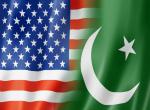

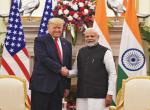
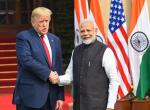
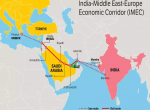
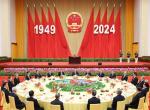

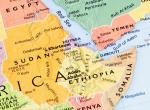
Post new comment